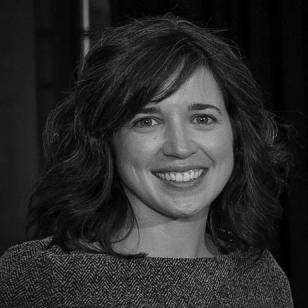
Building a new green school is a considerable investment for any community, and the pressure is on to get it right. You want to make sure it’s a building that supports student learning, protects student and teacher health, and saves money in the long run by cutting down operating and utility costs.
If you achieve these goals, you’ve built a green school—and one you can be proud of. But how do you know that your team will achieve what you’ve set out to achieve? Here are five key questions to ask the architect as you get started.
1. Can we visit a few green buildings you’ve designed?
Experience with green building practices is critical for success. With the tight budget you’re working with, you can’t afford to experiment with products or technologies that your architects or engineers haven’t implemented before. Green building isn’t new, and there are many smart strategies that can get you the results you want without introducing unnecessary risk.
Additionally, visiting buildings that your architect has designed can give you a window into their design philosophy, help you understand your options, and inspire you to think creatively about your project.
Read: How green schools bring environmental science alive
2. What standards will ensure a healthy environment for students and teachers?
You want a healthy building, but it can be difficult to understand what factors to consider and how to know if you’re succeeding. Environmental health considerations in buildings include ventilation and air quality, adequate daylight, good acoustics, healthy materials, and more.
Green building standards are developed by creating consensus among researchers and practitioners around the measurements that should be used to know whether a building design is following best practice to protect health. Don’t rely on your architect to be the authority on health in your new building; ask them to name the standards they’re using and show you how they’re meeting them.
Green building isn’t new, and there are many smart strategies that can get you the results you want without introducing unnecessary risk.
3. What is our target EUI?
If your aim is to build an energy efficient school, you’ll need to set a specific goal around the building’s Energy Use Intensity, or EUI. This measure is expressed in kBtu/ft2, and it can refer to source energy or site energy. In 2015, the U.S. Environmental Protection Agency’s Energy Star program reported that the average source EUI for schools using it’s Portfolio Manager platform was 114 kBtu/ft2.
For schools striving for net-zero energy, the National Renewable Energy Lab suggests targeting a source EUI of between 49 and 72, depending on your climate zone. Setting a goal for your school’s EUI and putting it in your contract documents is the best way to hold the team accountable and get what you want.
Read: How net-zero energy schools can turn a profit
4. How are clients supported after the building is operating?
The scope of work for architects can vary considerably, and it can be tempting to cut down on their scope to save money. If you want a high-performing school building, though, prepare for the fine-tuning that might be necessary after the building is open.
If you’ve set a target EUI during design but are not achieving it in reality, for instance, the design team will need to troubleshoot with the contractor and your operations staff. Differences between how a building was designed and how it is operating don’t necessarily indicate bad design or construction; they are often par for the course as the building’s occupants start using the building in ways that might be unexpected.
Read: How to share school parks with your community
5. What assurance do we have that the green building goals are being met?
In education, how well students are progressing is measured by a third party (the teacher, a test, etc.), not the students. Similarly, during design and construction, self-assessment can be useful, but at some point, you will likely want proof that the team you’ve hired is achieving the goals you set. Third-party certification, such as the U.S. Green Building Council’s LEED rating system, is the best way to set specific goals early on, stick to them, and measure how well the building meets those goals.
When you’re building a school, nothing is more important than creating a place where students can thrive and teachers feel supported. With the right information and a good team, you can manage the design and construction process to build a school that the entire community will be proud of for years into the future.
Anisa Heming is the director of the Center for Green Schools at the U.S. Green Building Council, which provides information that can support school districts in understanding and assessing decisions related to green schools. With a background in architecture, Heming began her work with USGBC in New Orleans and was hired to assist with rebuilding the schools after hurricanes Katrina and Rita.

